22 Jul, 2020
By: Kunal Bharat, Technical Expert, GIZ | Photographs By: Carrot Films and Kunal Bharat
Flying over the Himalayas in search of better weather and food, the Bar-headed goose holds the record for one of the highest flying birds. Their winter migratory route from high altitude lakes in central Asia along the Central Asian Flyway to wintering grounds in the Indian subcontinent, crosses over the some of the highest mountains in the world. Mountain climbers have reportedly sighted them over peaks such as Mt. Everest and Mt. Makalu. The Bar-headed goose is one among several migratory and resident birds that make Pong Dam wetland in Himachal Pradesh their home.

(clockwise from top) Bar-headed goose, Himalayan griffon, Black-winged stilt, River lapwing and River tern at Pong Dam wetland ©GIZ/Carrot Films
Pong Dam wetland was formed as a result of the construction of Pong Dam across the Beas river in 1974. With over 400 recorded bird species, the entire area is a notified wildlife sanctuary (1972) as well as a wetland of international importance under the Ramsar Convention (2002).
For more than two decades now, the Wildlife Division of Himachal Pradesh Forest Department has been conducting annual waterbird census to monitor number of bird species, their population and understand shifting trends for better management of the wetland. This year the Wetlands Management for Biodiversity and Climate Protection project accompanied the group to document the process for an educational and training video under production now. This photo essay takes you through the two-day waterbird census that took place on 30th and 31st January 2020 at Pong, Himachal Pradesh.
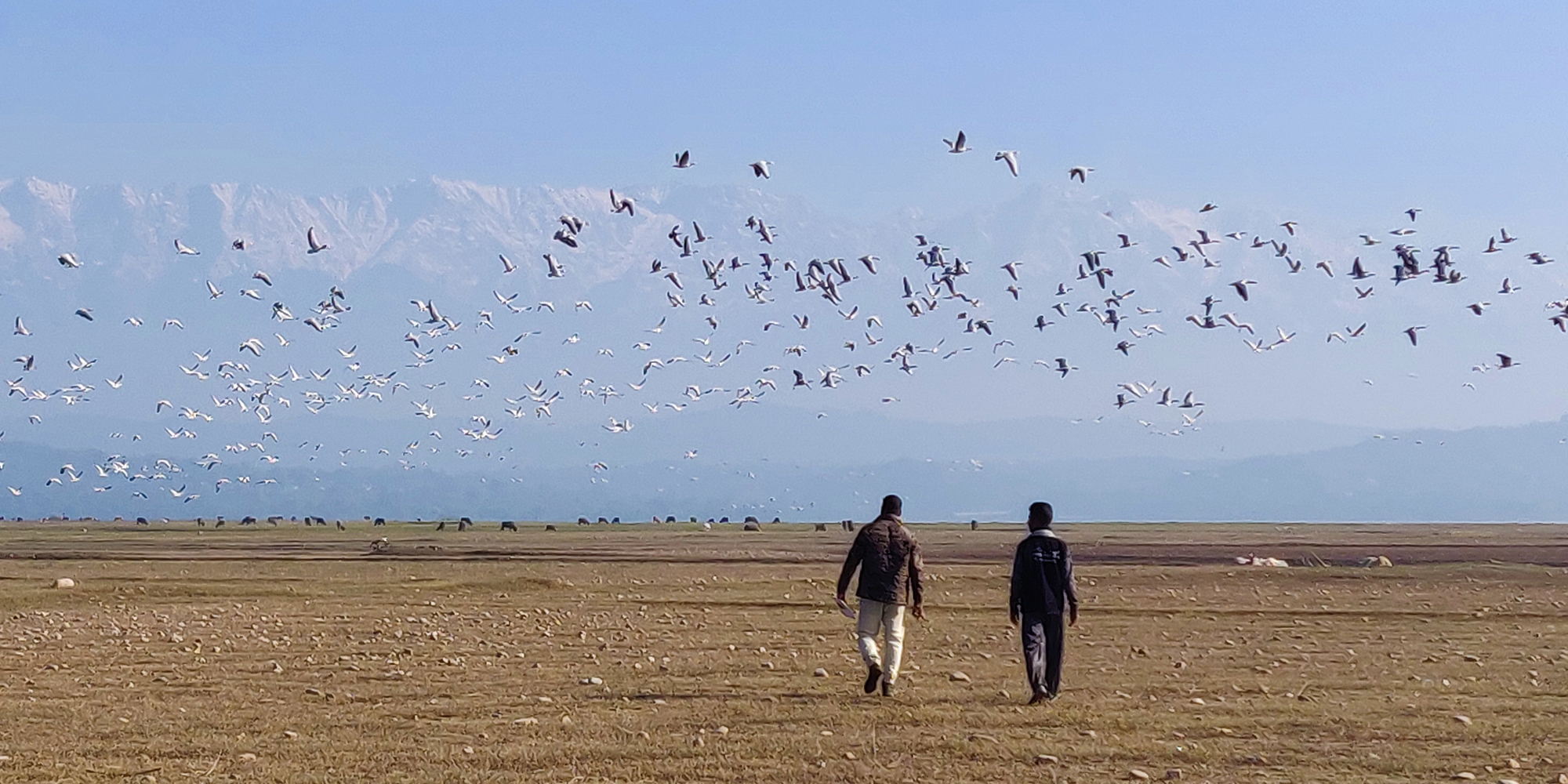
Bar-headed geese with Dhauladhar range in the background during a fortnightly bird count ©GIZ/Kunal Bharat
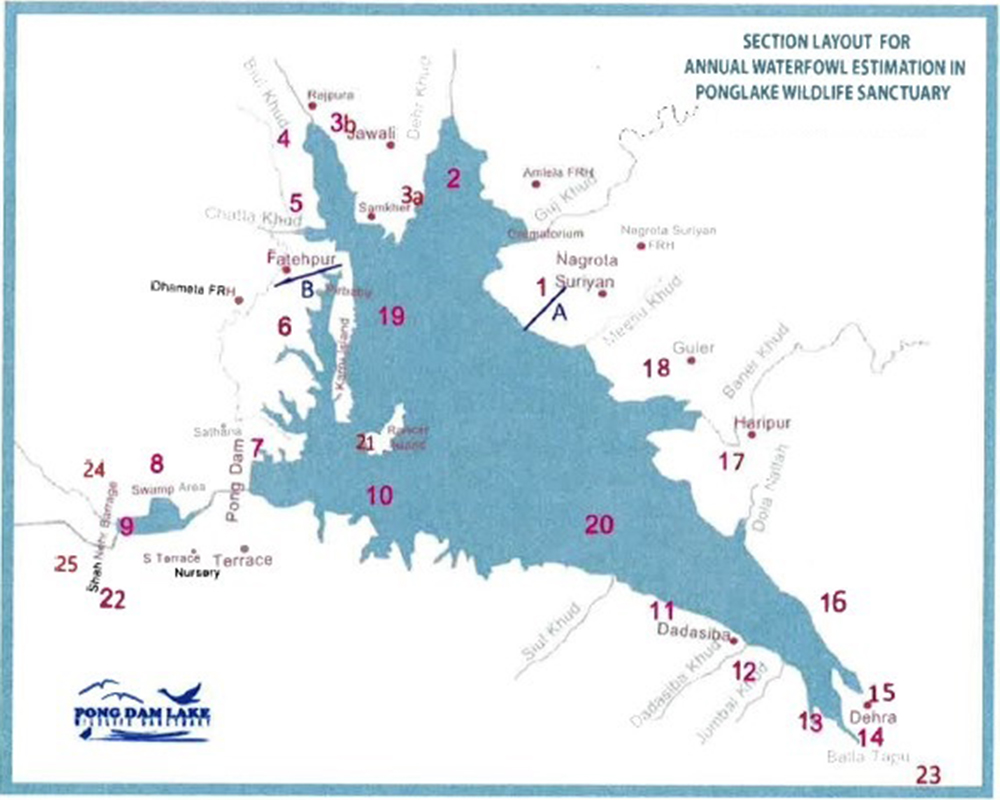

Section layout for waterbird census (map: HPFD); arrival of experts ©GIZ/Carrot Films
For an exercise this huge, the actual planning and preparation begins months prior to the actual day of census. This includes fortnightly bird counts, inviting experts and volunteers, preparing maps, recording sheets, equipment and several other logistical arrangements. Pong Dam Lake Wildlife Sanctuary covers an area of about 207 sq. km which is divided into 26 sections for the waterbird census.
The entire Wildlife Division of Himachal Pradesh Forest Department is engaged in the process along external experts and volunteers. All the experts, coordinators and volunteers arrived a day prior to the census. A briefing workshop was held the same day on bird identification and counting techniques along with an explanation of the field protocol for the next day.
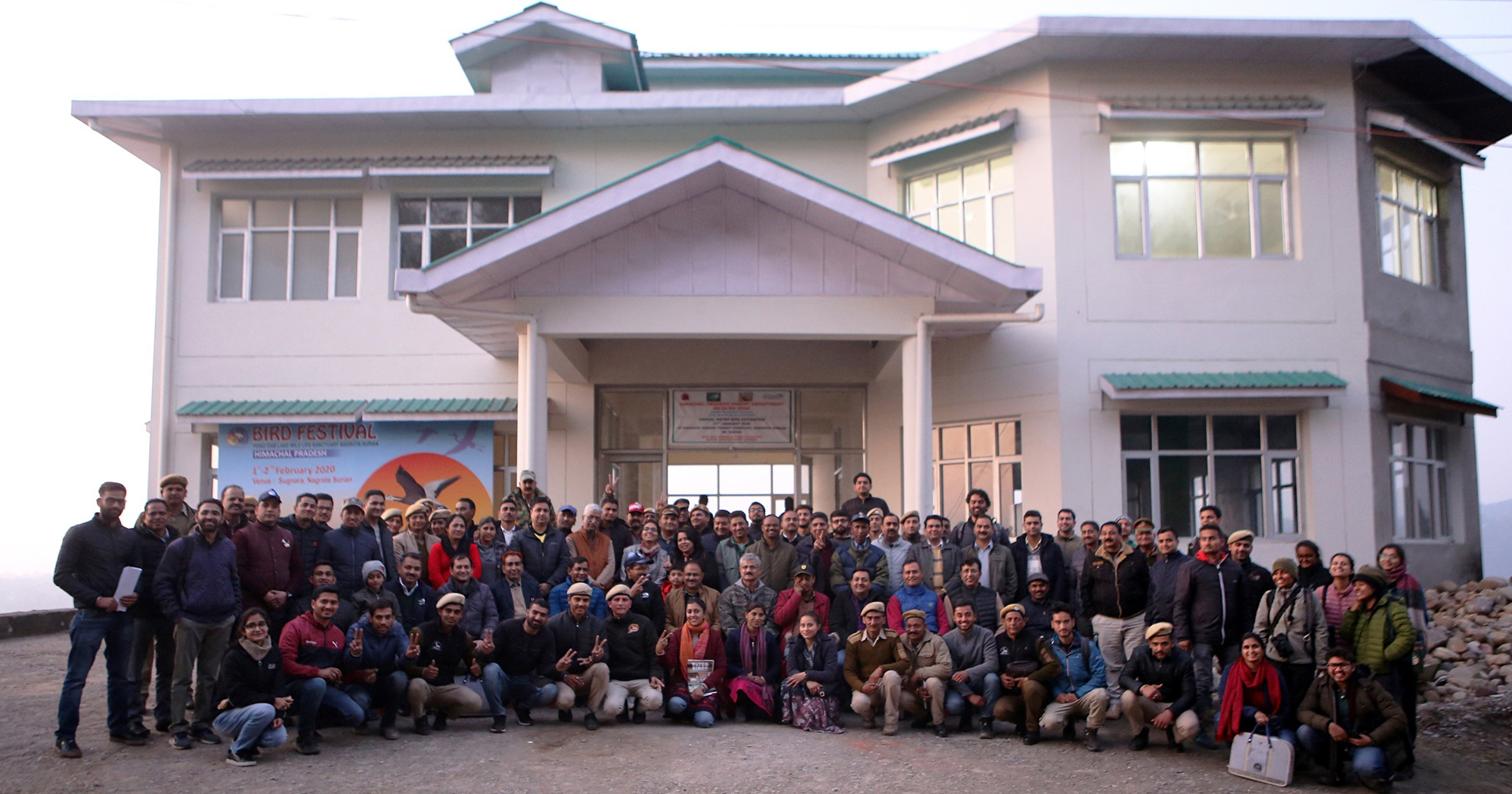
Experts, coordinators and volunteers at briefing workshop for the Pong waterbird census 2020 ©GIZ/Carrot Films
The participants split up into 26 teams, one for each section, with each team comprising of an expert, coordinator, assistant coordinator and young volunteers. They were provided with field bird guides, maps, recording sheets and other equipment. By evening all the teams were dispatched to their respective overnight stay locations close to their designated sections for an early start for the survey the next day.
On the day of the census, with the exception of one team starting early to count the roosting cormorants, all other teams started the counting exercise at 9 AM. The starting time is slightly delayed from the usual time of 7 AM to avoid the early morning fog on the lake and better visibility.
Bird count by teams on foot and by boat ©GIZ/Carrot Films
Pong Dam wetland offers a rich variety of habitats for both resident and migratory birds which include grasslands, swamps, islands, forest as well as an expansive lake-water-ecosystem. This variety makes the census process really interesting as it requires teams to move on foot and by boats. While some boats row along the shoreline, a few teams survey deep waters and the Rancer Island. The forest guards in each team play an important role here as they understand the topography and nature of various habitats inside out.
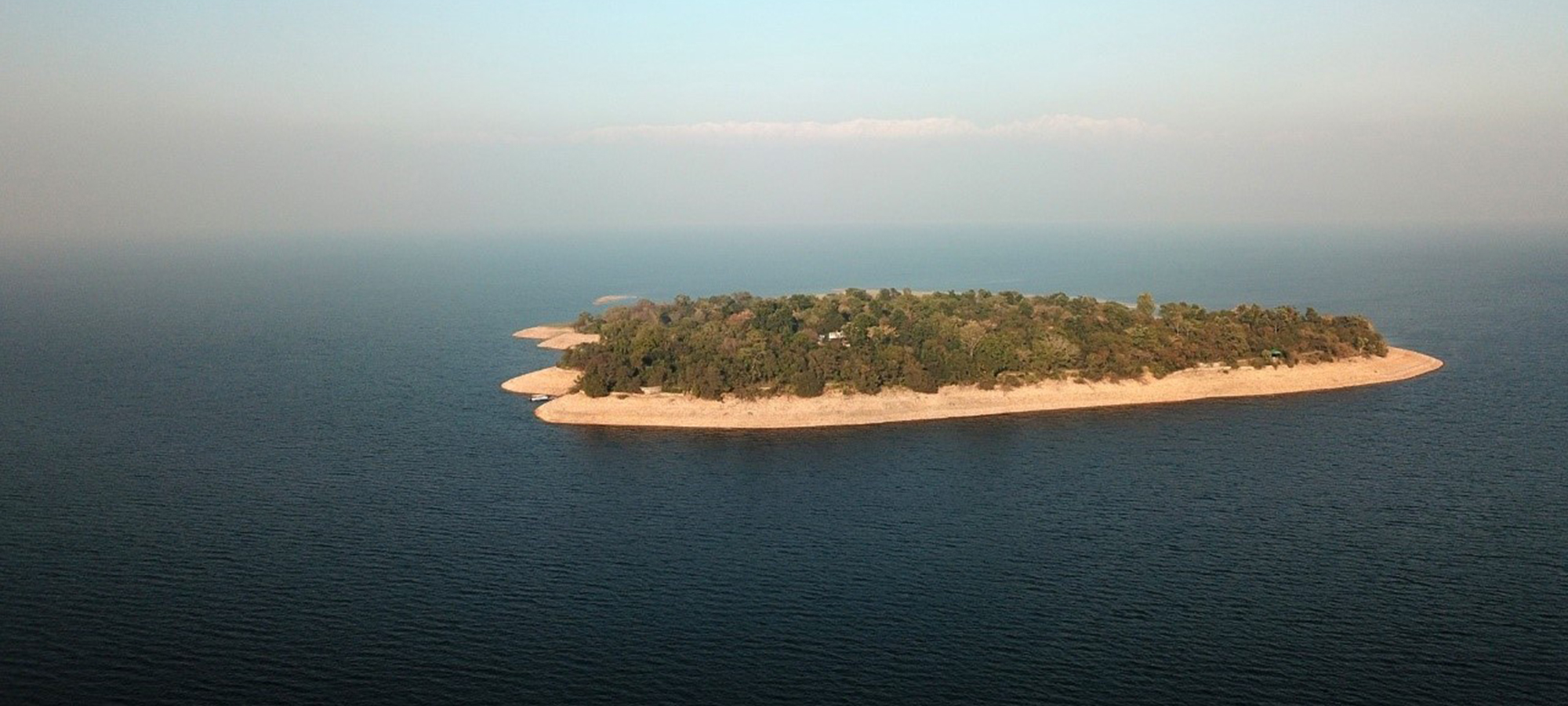


Habitats at Pong Dam wetland ©GIZ/Carrot Films & Kunal Bharat
Apart from recording on datasheets, the teams also use GPS-based mobile bird count applications, photographs and videos for recording and cross-checking the observations later. After a morning of bird counting, the teams conclude the exercise at designated points by 1pm. By evening recording sheets from all 26 sections arrive at the range office in Nagrota Surian and the rigorous task of data collation, analysis and review begins.

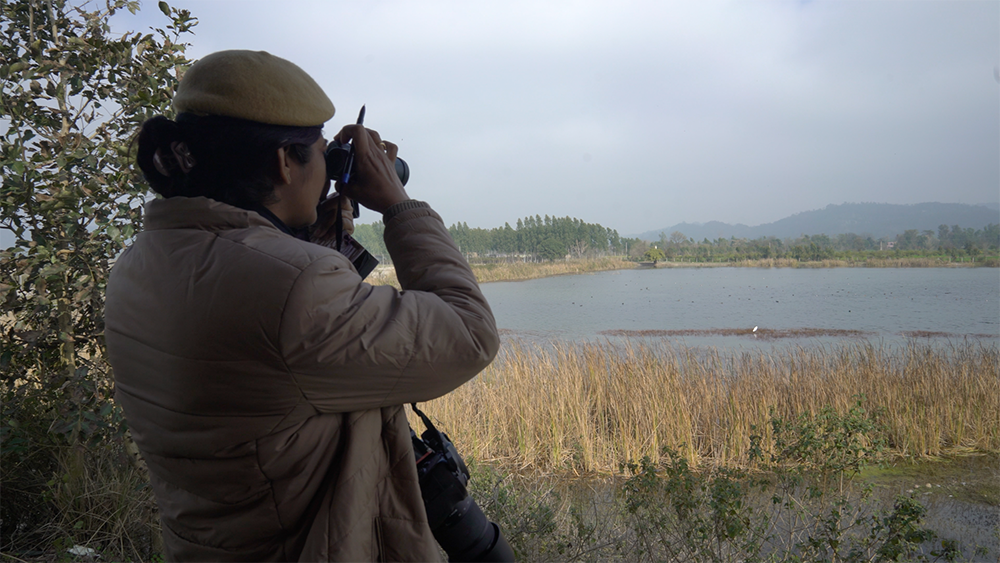
Bird counts supported with photographs and videos ©GIZ/Carrot Films
The results of the Pong waterbird census 2020 were announced by Dr. Savita, PCCF (Wildlife) and Chief Wildlife Warden HPFD, during a Bird Festival being held the next day. Compared with previous year, total population of birds has shown a marginal increase from 1,15,229 to 1,15,701 whereas number of species recorded increased from 103 to 114. This includes 1,04,032 migratory water fowls of 60 species, 10,377 resident waterbirds of 30 species and 1292 birds of 24 other local species.
Bar-headed geese ©GIZ/Carrot Films
Pong Dam wetland continues to host the largest congregation of Bar-headed geese with a count of 49,496 estimated this year, an increase of 68% compared to previous year (2018-19). Other dominant species recorded include Nothern Pintails (12,881), Eurasian Coots (10,860), Common Teals (7334), Common Pochards (3988), Northern Shoveler (2818), Great Cormorants (2121), Eurasian Wigeons (1350) and Ruddy Shelducks (1028).
As highlighted by the article titled “How birds can help us save forests and provide livelihood” in the previous issue of IGBP newsletter (Issue no.7 May 2020), bird data can serve as indicators of ecosystem health or changes. Analysis of year on year Pong waterbird census data helps track the wetland’s health as well as effectiveness of wetland management and conservation measures. As part of the Wetlands Management for Biodiversity and Climate Protection project, an ecosystem-based integrated management plan is being developed along with implementing partners and stakeholders to ensure conservation and wise use of Pong Dam wetland.
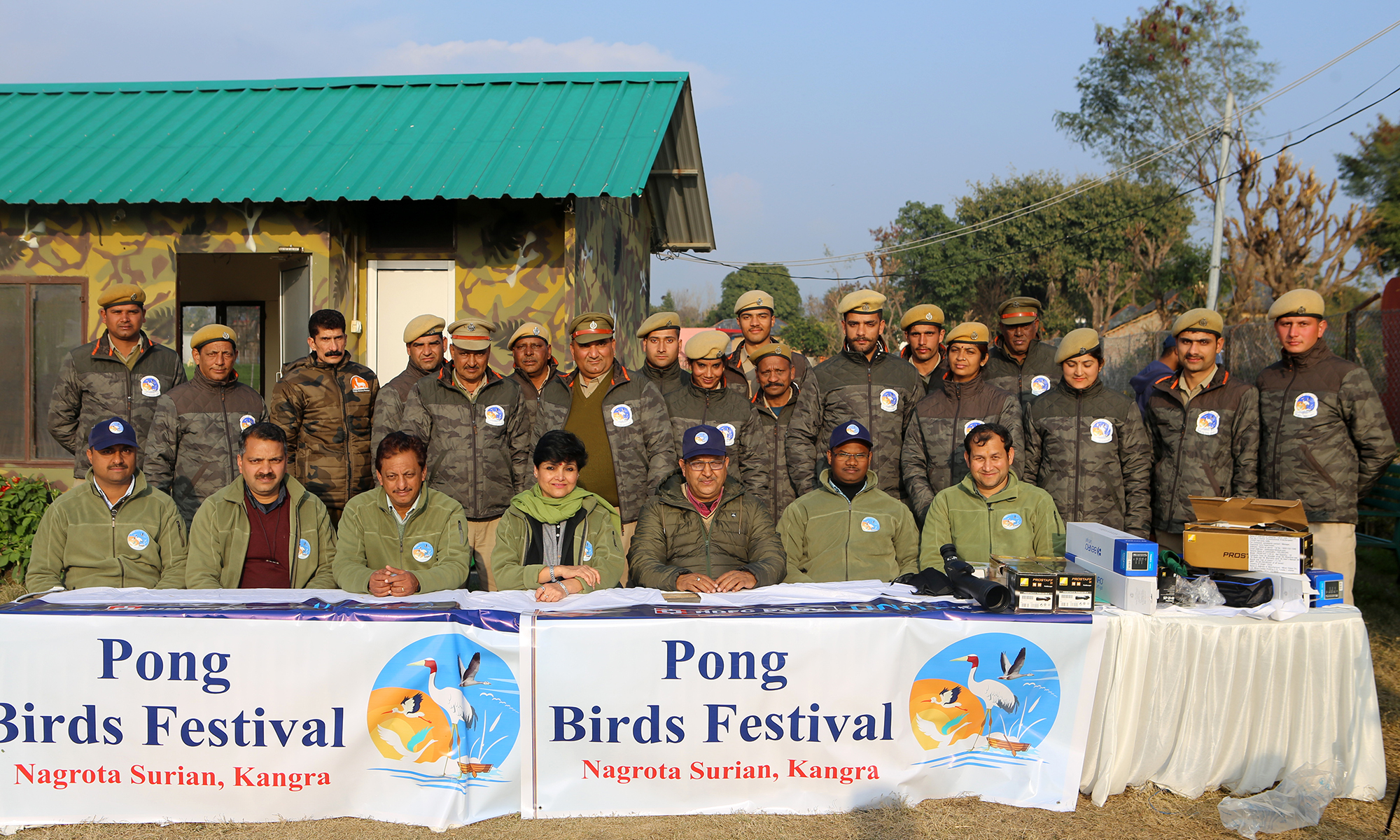
Himachal Pradesh Forest Department Wildlife Division ©GIZ/Carrot Films
We would like to hear from you. Write to us by clicking on the feedback button on top.
© 2014 IGBP. All Rights Reserved.
Site By: Virtualpages
